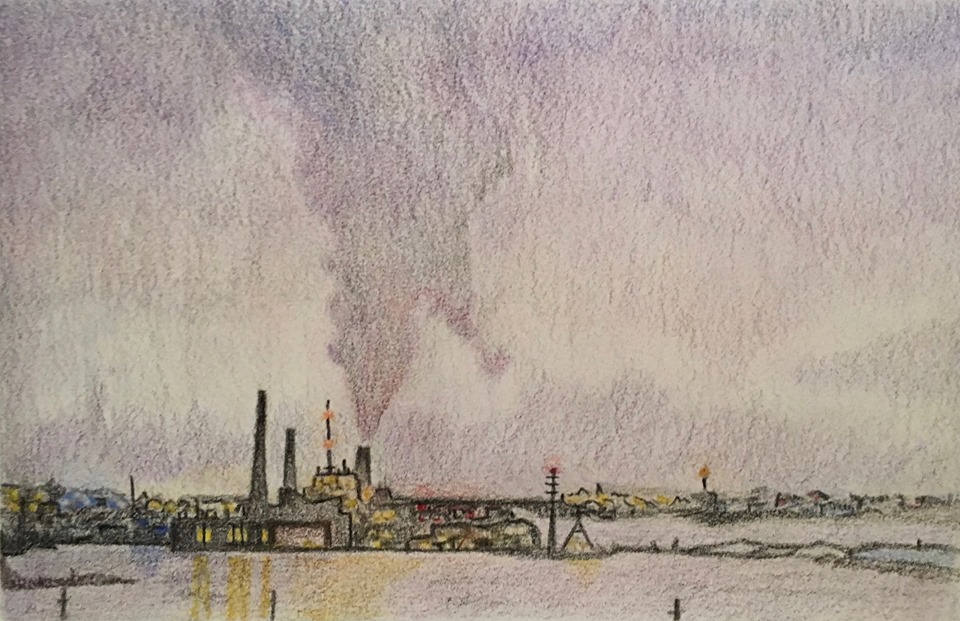Humanity is currently experiencing an unprecedented era of urban growth. By 2030, more than 1.2 billion additional people are expected to live in cities, equivalent to building a city the size of New York every six weeks.
A group of international scientists, including Andrew Gonzalez, a professor in the McGill Department of Biology, surveyed over 922 studies on urban growth’s impacts on biodiversity. Their study, recently published in Nature, found that scientists are not studying the impacts of urban growth in the right places: 72 per cent of studies of direct urban impacts on biodiversity are in high-income countries, while the natural habitat loss in lower-income countries, largely ignored by the scientific community, is much more severe. In essence, researchers are neglecting to study low-income urban growth.
In an interview with The McGill Tribune, Gonzalez explained the importance of studying the effects of urbanization on biodiversity, particularly in developing countries.
“[In] Nigeria, Brazil, and China, where human growth is [greatest] and where biodiversity is the richest, is where we have the most to lose,” Gonzalez said.
Generally, the direct effects of urban growth on habitat loss are well understood: Building construction often results in habitat destruction and fragmentation. According to Gonzalez, however, scientists are not paying enough attention to the indirect effects, which outweigh the direct consequences.
“The indirect effect of urban expansion is the resources cities demand,” Gonzalez said. “The ecological footprint of cities is much greater than the footprint of just the building. We have a bad understanding of the indirect effects of urban growth.”
Cities also require land for food and energy, another example of urbanization’s indirect impacts on the environment. This requires converting vast areas of land into agricultural spaces to sustain cities, leading to more habitat loss.
“The amount of agricultural land required to feed the world’s cities is 36 times greater in size than the urban areas themselves,” Gonzalez said.
Despite this knowledge, only 34 per cent of studies have quantified these indirect impacts.
Gonzalez pointed out that however detached we may feel living in a city, we are fundamentally dependent on ecosystems.
“We depend on them for normal things,” Gonzalez said. “Food, fibre, water, air, recycle all those essential things we need for life, species do all of that. What makes these habitats the Amazon or the boreal forest is their biological diversity and the variability of living organisms in these places. Habitat loss impacts the things we rely on.”
People in low-income countries are largely moving to cities due to increasing industrialization and job availability. This presents a major problem for cities with limited infrastructure that must continue expanding to keep up with the influx of people from rural areas. In this case, urban expansion is necessary, and hindering it is unrealistic. Gonzalez suggests tangible ways to reduce the habitat loss caused by urbanization.
“There is nothing wrong with a city per se; the question of how we choose to live in a city is the issue,” Gonzalez said.
By reducing urban sprawl and allowing nature and people to coexist by enforcing policies such as green belts, or areas where building is restricted, cities can achieve greater sustainability as urban centres grow.
Although there seems to be a plethora of environmental concerns that merit our attention, the loss of habitat and the disappearance of native species is often not given the weight it deserves.
“Habitat loss used to be the kind of thing we worried about ethically,” Gonzalez said. “Now we realize it is integral for the functioning of our ecosystems and biosphere. Our fate is determined by how we treat our biodiversity, and in that, our biosphere.”









What you refuse to consider (because it is not politically allowed to be stated) is that urban growth in Canada, as in all Western countries, is driven by immigration, and so it is immigration that has a negative effect on biodiversity. You are in physics, Wren, it should be obvious the link between immigration-population growth-decline in biodiversity. But students today are timid, accepting of the establishment, pretending to be edgy, when they would never dare challenge the globalist driven agenda to bring in cheap labor and transform all white created nations into diverse nations.